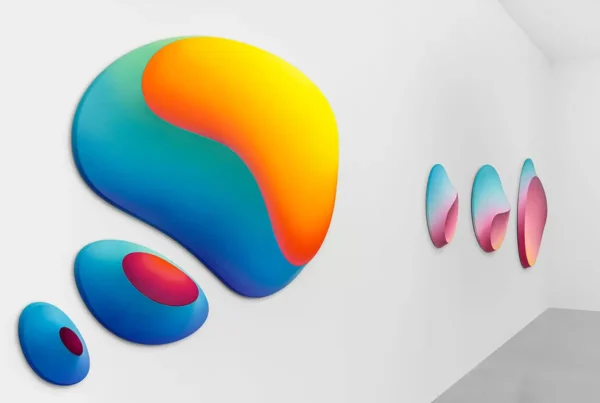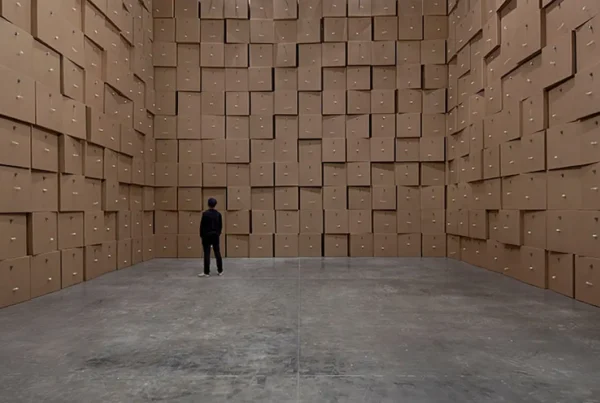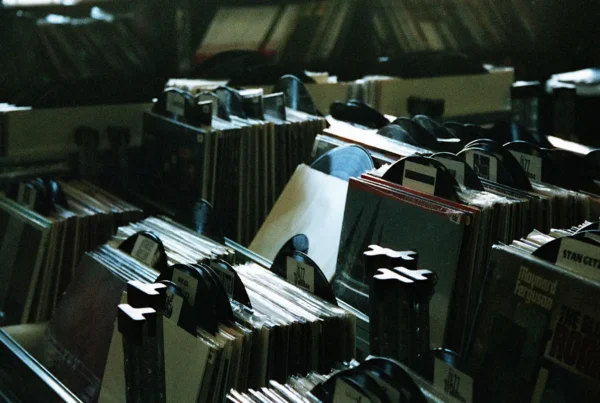Hugo Johnson: Sculpting Timeless Worlds through Digital Art
Hugo Johnson has earned his place as one of the most innovative 3D artists working today, bringing a distinct blend of experimental techniques and digital storytelling to the contemporary art scene. Based in London but originally from Ireland, his career has been defined by a relentless exploration of time and movement, creating mesmerizing visual narratives that loop indefinitely. These digital creations, often drawing on classical art and architecture, possess an uncanny ability to fuse the familiar with the futuristic, leaving viewers suspended in a world that feels both timeless and cutting-edge. Johnson’s work has caught the attention of leading global brands and has been showcased in some of the world’s most exciting art hubs, including London, Tokyo, Paris, and Seoul.
The hypnotic quality of Johnson’s work lies in his deep fascination with manipulating time. His looping animations, in particular, showcase a mastery of creating “infinite moments”—snapshots that stretch forever without reaching a conclusion. Through this, he crafts a digital experience that evokes meditation and contemplation, drawing viewers into a flow of uninterrupted motion. These intricate loops are not just about visual aesthetics but also challenge how we perceive time itself, offering an intriguing exploration of its fluidity and subjectivity. By bending and reimagining these temporal boundaries, Johnson transports his audience into surreal dimensions that blur the line between dream and reality.
Much of Johnson’s work combines classical influences with modern digital tools, which he uses to explore the tension between past and future. While his contemporary medium offers limitless possibilities for design, his inspiration often comes from centuries-old art forms. The symmetry and precision of classical architecture, with its timeless beauty, play a significant role in shaping his style. However, these historical elements are transformed through hyperreal digital techniques, creating landscapes that feel as if they belong in both an ancient past and a distant future. This blend of eras allows Johnson’s work to resonate deeply, inviting viewers to see familiar forms in entirely new ways.

Hugo Johnson: The Fusion of Organic and Synthetic
One of the most compelling aspects of Hugo Johnson’s work is his ability to merge organic and synthetic forms, creating visual tension that feels both alive and otherworldly. This theme of blending nature and technology emerges in many of his pieces, where natural shapes are juxtaposed with digital abstractions. The result is a series of works that feel familiar but slightly alien, as though these creations could belong in both our world and a distant, imagined future. Whether depicting human figures dissolving into light or intricate, creature-like forms that evoke both biological and digital inspiration, Johnson masterfully walks the line between organic softness and synthetic sharpness.
What makes this fusion particularly captivating is Johnson’s exploration of the fluidity of human forms. In many of his sculptures, bodies appear to flow like liquid, defying physical limitations as they dissolve into intangible substances. This fluidity suggests transformation and impermanence, giving his work an ethereal quality that invites reflection on themes of fragility and change. The contrast between these dissolving figures and the hard, geometric lines that often accompany them creates a visual dialogue between the natural and the mechanical, challenging viewers to question where the line between the two is drawn.
The haunting beauty of Johnson’s organic-synthetic interplay extends beyond just the visual elements. His pieces evoke a sense of unease and wonder, as the figures—though seemingly alive—feel as if they could slip away at any moment. This vulnerability, coupled with the resilience suggested by the towering, abstract structures surrounding them, creates a powerful emotional response. The dynamic between fragility and strength is ever-present in his work, making it not only visually compelling but also emotionally resonant.

Reinterpreting Time through Infinite Loops
At the heart of Hugo Johnson’s work is his ongoing exploration of time, particularly through the medium of looping animations. These loops serve as a way to capture fleeting moments and extend them indefinitely, creating a hypnotic sense of motion that never quite resolves. For Johnson, the concept of time is more than a linear path; it’s an ever-evolving experience that varies depending on perception. His looping works immerse the viewer in a suspended state, where time feels both slowed down and accelerated, a paradox that intrigues and captivates.
The notion of infinite repetition is central to Johnson’s artistic philosophy. His fascination with cycles of motion reflects a broader interest in how humans experience time—something constant yet deeply personal. Through his digital works, Johnson creates a space where viewers can engage with this concept in a tangible way. The infinite loops evoke a trance-like state, drawing the audience into a meditative rhythm where movement and stillness coexist. The beauty of these animations lies in their ability to be watched repeatedly without losing their sense of mystery, a testament to Johnson’s skill in manipulating both form and time.
Moreover, Johnson’s looping animations often play with light, texture, and color to enhance their temporal effects. Ethereal tones, soft glowing lights, and delicate textures are frequently employed to create a dreamlike atmosphere, further emphasizing the surreal nature of the time loops. These visual elements contribute to a sense of suspension—viewers are caught in the middle of a moment that stretches into infinity, immersing them in an eternal, mesmerizing world where time ceases to function in any conventional sense.

Hugo Johnson: Between Monumentality and Intimacy
In recent years, Hugo Johnson’s work has moved towards a deeper investigation of scale and how the human figure interacts with monumental forms. His compositions often place small, isolated figures within vast, sprawling landscapes or structures, emphasizing a sense of awe and insignificance. This manipulation of scale creates an emotional contrast, highlighting the vulnerability of human existence in the face of overwhelming environments. The figures in his work, while central, are dwarfed by the monumental, abstract landscapes around them, inviting viewers to reflect on themes of isolation and wonder.
Johnson’s fascination with these vast environments stems from his interest in how humans relate to the world around them. The isolated figures in his work suggest both the fragility and resilience of humanity. Positioned against grand, often surreal backdrops, these figures seem to be on the edge of discovery, navigating an unknown and mysterious world. This sense of exploration is key to Johnson’s artistic vision, as his work constantly invites the viewer to engage with the unknown. The monumental forms often resemble biological or geometric structures, creating a contrast between the human and the alien.
While these large-scale environments might initially appear imposing, Johnson also imbues them with a sense of intimacy. The smaller figures often seem to pause in quiet contemplation, suggesting a personal journey within these massive spaces. This duality between the monumental and the intimate is a recurring theme in his work, encouraging viewers to consider both their place in the world and the quiet beauty of their inner experience. Through this lens, Johnson’s art becomes a reflection on both the vastness of the universe and the smallness of human life—an interplay between awe and introspection that defines much of his creative output.






